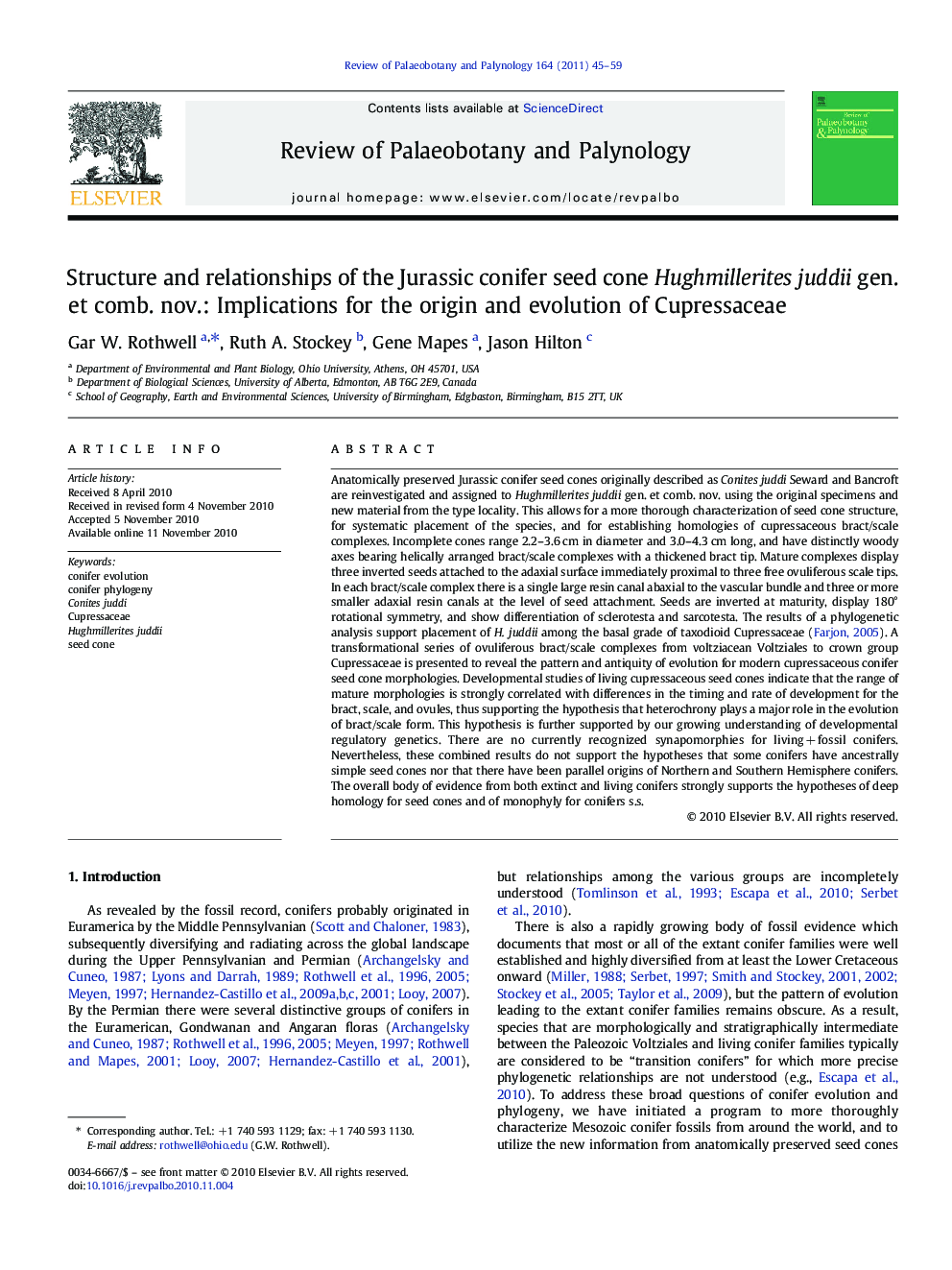| کد مقاله | کد نشریه | سال انتشار | مقاله انگلیسی | نسخه تمام متن |
|---|---|---|---|---|
| 4750584 | 1642537 | 2011 | 15 صفحه PDF | دانلود رایگان |

Anatomically preserved Jurassic conifer seed cones originally described as Conites juddi Seward and Bancroft are reinvestigated and assigned to Hughmillerites juddii gen. et comb. nov. using the original specimens and new material from the type locality. This allows for a more thorough characterization of seed cone structure, for systematic placement of the species, and for establishing homologies of cupressaceous bract/scale complexes. Incomplete cones range 2.2–3.6 cm in diameter and 3.0–4.3 cm long, and have distinctly woody axes bearing helically arranged bract/scale complexes with a thickened bract tip. Mature complexes display three inverted seeds attached to the adaxial surface immediately proximal to three free ovuliferous scale tips. In each bract/scale complex there is a single large resin canal abaxial to the vascular bundle and three or more smaller adaxial resin canals at the level of seed attachment. Seeds are inverted at maturity, display 180° rotational symmetry, and show differentiation of sclerotesta and sarcotesta. The results of a phylogenetic analysis support placement of H. juddii among the basal grade of taxodioid Cupressaceae ( Farjon, 2005). A transformational series of ovuliferous bract/scale complexes from voltziacean Voltziales to crown group Cupressaceae is presented to reveal the pattern and antiquity of evolution for modern cupressaceous conifer seed cone morphologies. Developmental studies of living cupressaceous seed cones indicate that the range of mature morphologies is strongly correlated with differences in the timing and rate of development for the bract, scale, and ovules, thus supporting the hypothesis that heterochrony plays a major role in the evolution of bract/scale form. This hypothesis is further supported by our growing understanding of developmental regulatory genetics. There are no currently recognized synapomorphies for living + fossil conifers. Nevertheless, these combined results do not support the hypotheses that some conifers have ancestrally simple seed cones nor that there have been parallel origins of Northern and Southern Hemisphere conifers. The overall body of evidence from both extinct and living conifers strongly supports the hypotheses of deep homology for seed cones and of monophyly for conifers s.s.
Journal: Review of Palaeobotany and Palynology - Volume 164, Issues 1–2, February 2011, Pages 45–59